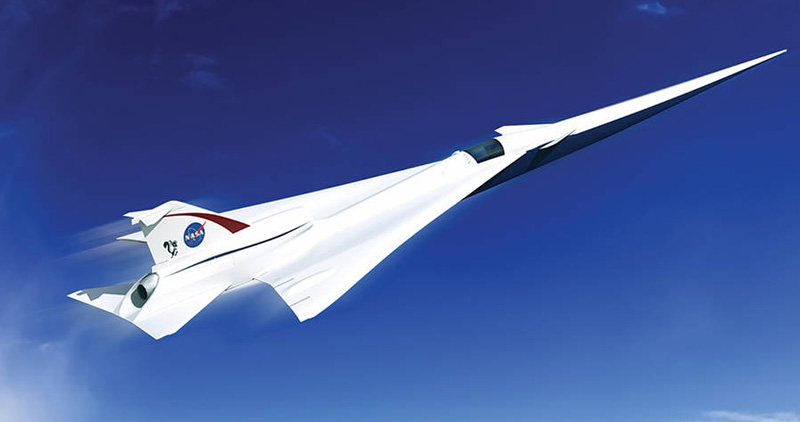L ockheed Martin is currently working with the National Aeronautics and Space Administration of the United States — more popularly known as NASA — on a design for a supersonic aircraft which could carry a maximum of 80 passengers called the N+2. It will supposedly be capable of cruising at Mach 1.7, which is 1.7 times the speed of sound — and according to the latest news pertaining to this joint venture, the quieter replacement for Concorde is one step closer to reality with the award of a contract for the preliminary design of a “low boom” flight demonstration aircraft…
…and passenger flight travel for the general public using this technology will possibly be more affordable — although specifics to that claim are unclear at this time. The timeline as to when the final iteration of this aircraft is expected to enter commercial passenger service is also unclear at this time — but one possibility might be the year 2025.
Depending on funding, designing and building the aircraft will take approximately four years, with aircraft starting their flight campaign around the year 2020. The company will develop baseline aircraft requirements and a preliminary aircraft design — with specifications — and provide supporting documentation for concept formulation and planning. Performance of this preliminary design also must undergo analytical and wind tunnel validation.
The first in a series of ‘X-planes’ in the New Aviation Horizons initiative of the National Aeronautics and Space Administration — which has the ambitious goals of reducing fuel use, emissions and noise through innovations in aircraft design that departs from the conventional tube-and-wing aircraft shape within ten years — this aircraft will use something currently known as Quiet Supersonic Technology.
“After conducting feasibility studies and working to better understand acceptable sound levels across the country, NASA’s Commercial Supersonic Technology Project asked industry teams to submit design concepts for a piloted test aircraft that can fly at supersonic speeds, creating a supersonic ‘heartbeat’ — a soft thump rather than the disruptive boom currently associated with supersonic flight.”
Summary
When I was a passenger on Concorde during its last week of regular commercial operation by Air France back in May of 2003, the indicator within the aircraft displayed a reading of Mach 2.01 — or slightly greater than twice the speed of sound. That experience was one of the best uses of my frequent flier loyalty program miles by far. However, the sonic boom produced by Concorde was approximately 100 times noisier than the sound which is expected to be produced by this aircraft — meaning that that aircraft could possibly be permitted by the Federal Aviation Administration of the United States to fly over land.
If you long to fly as a passenger on a supersonic aircraft, fantasy could possibly become reality for you as soon as nine years — and it is too bad that the process of designing and building the aircraft could not rival the speed of the aircraft itself…
Source: Lockheed Martin.
